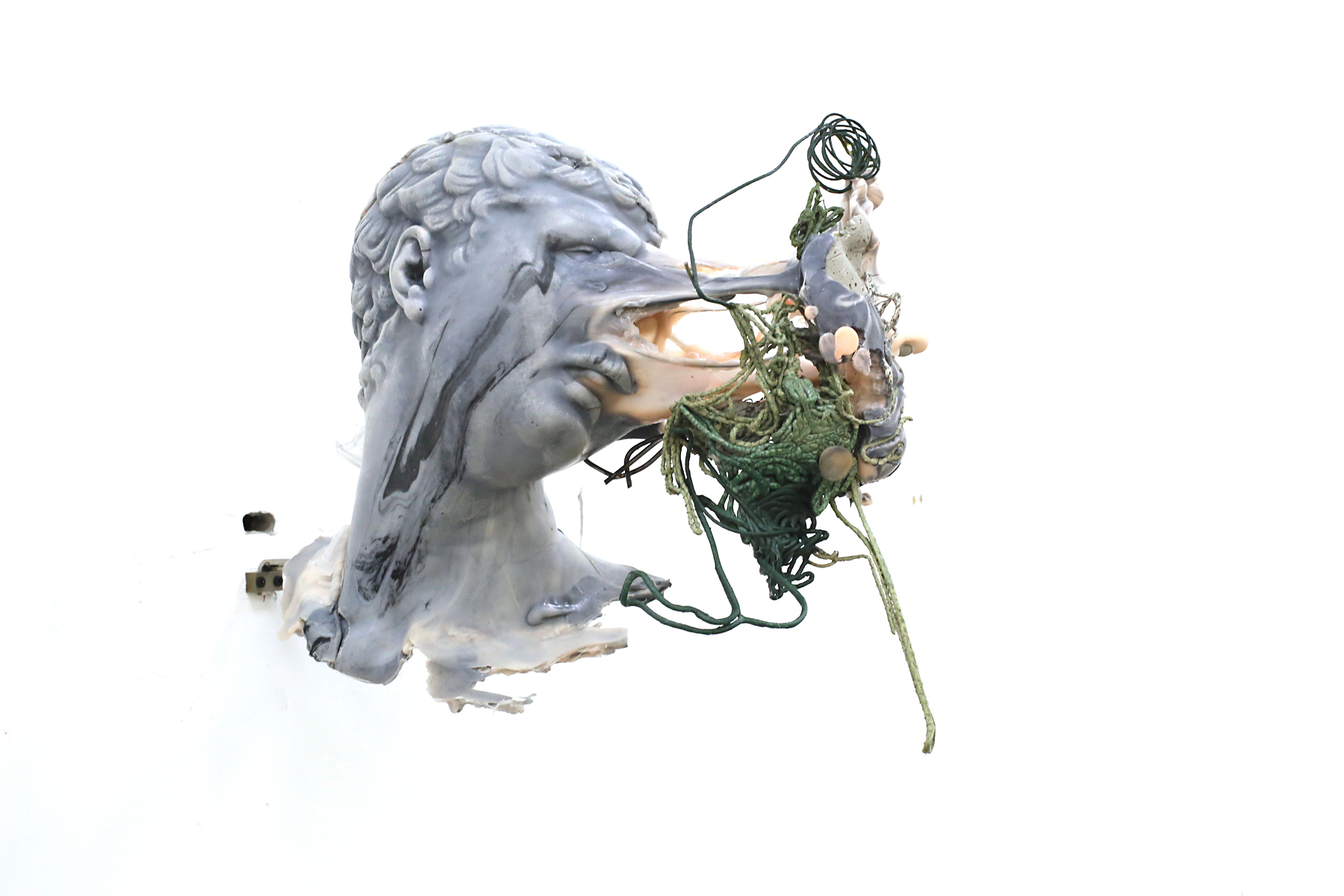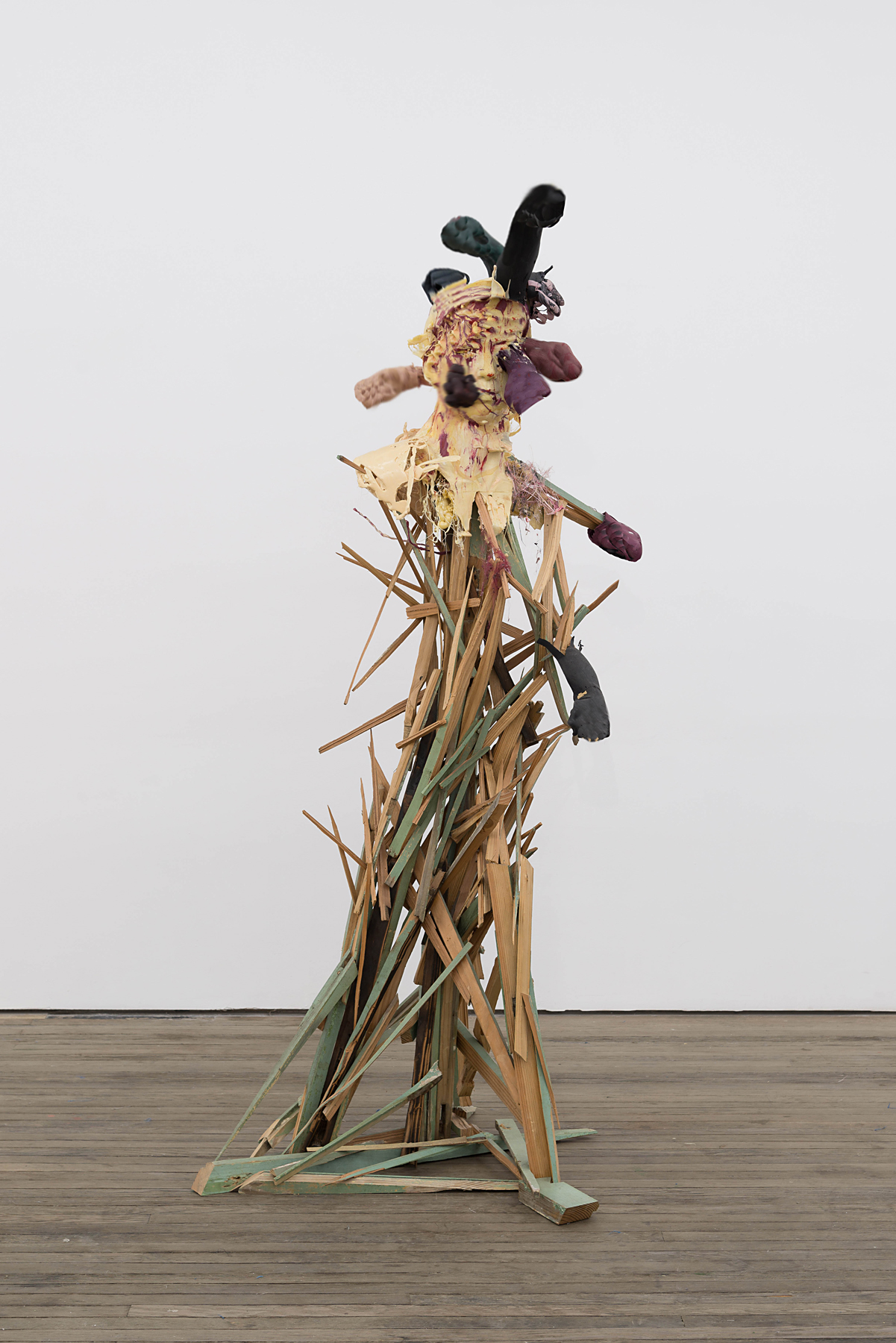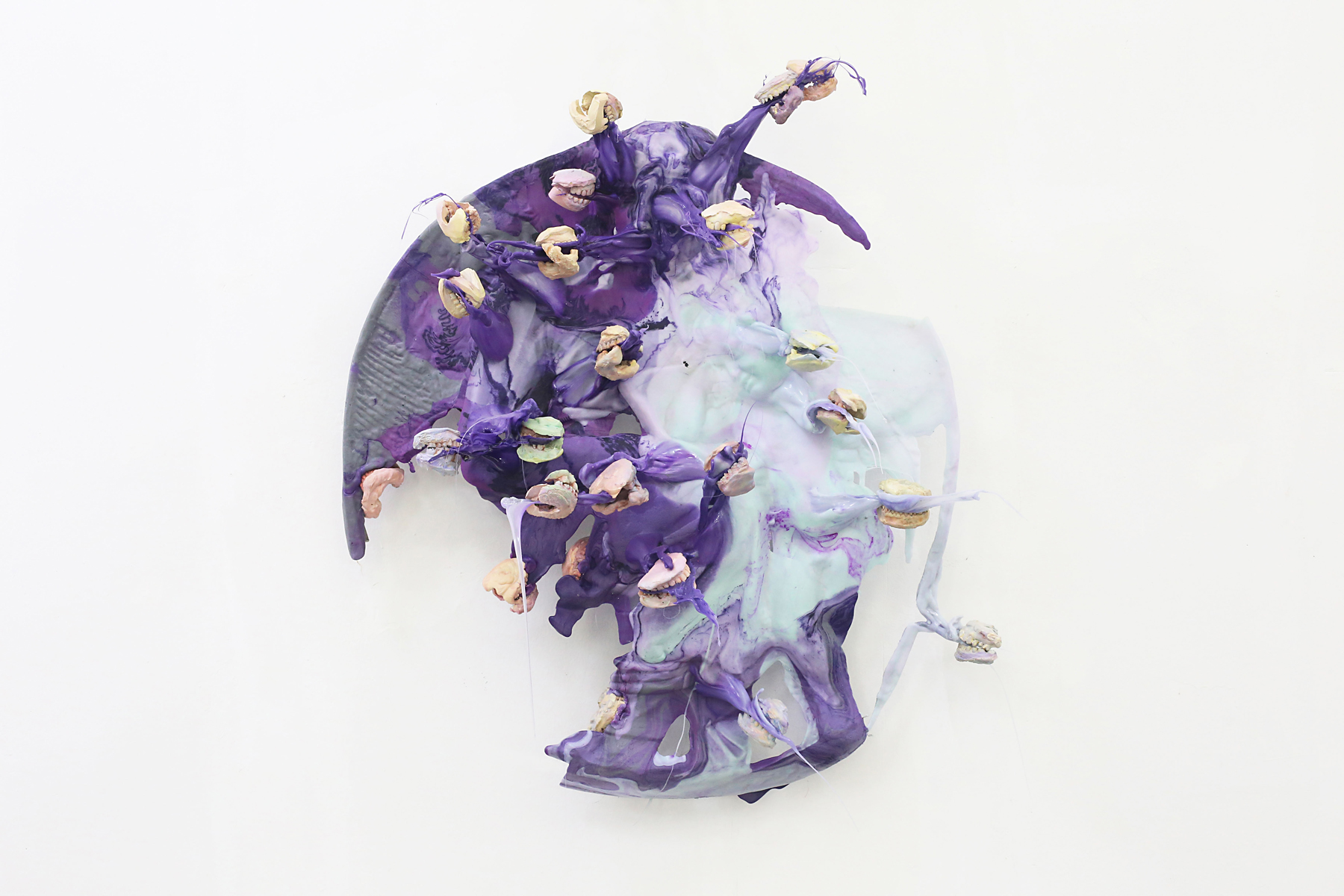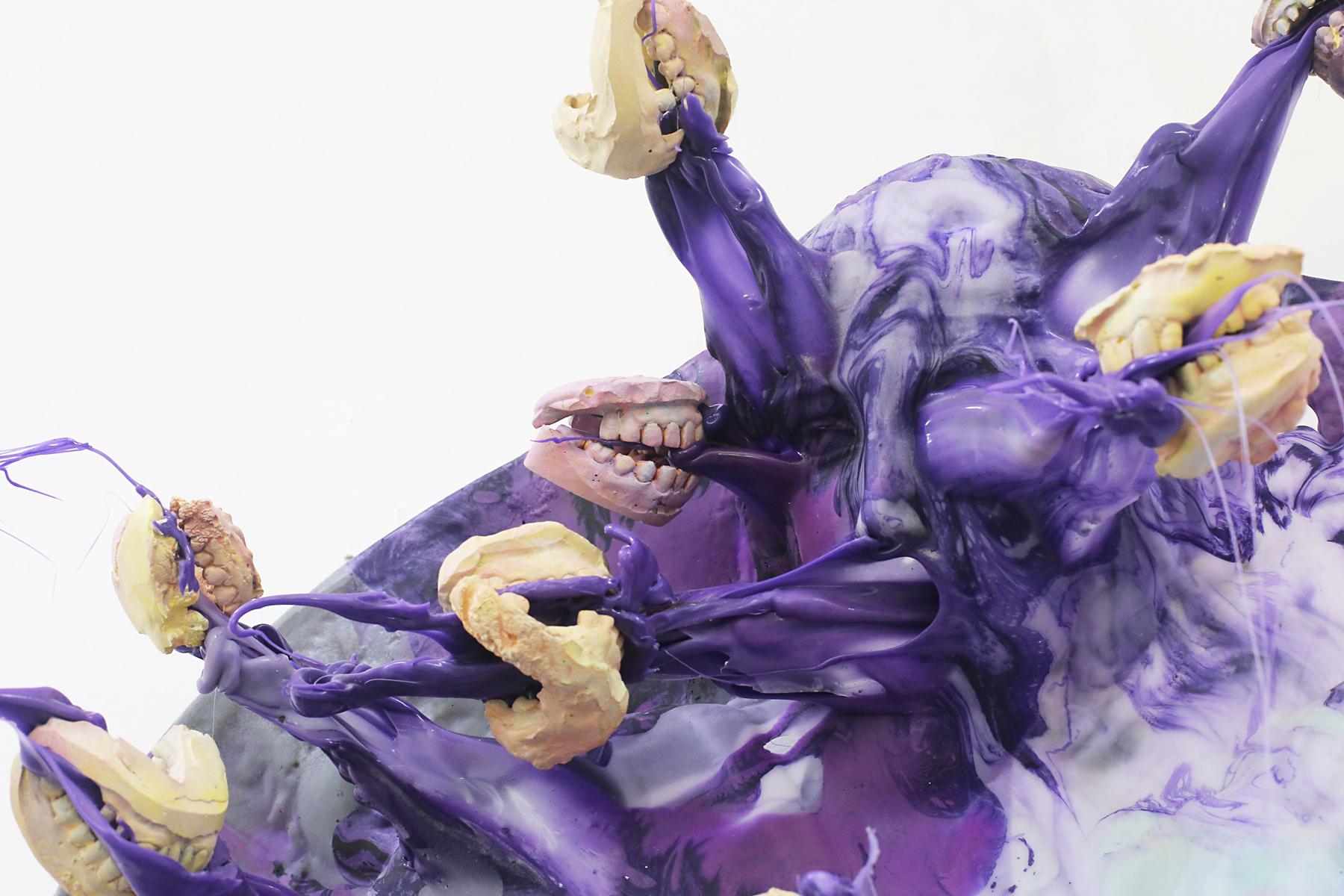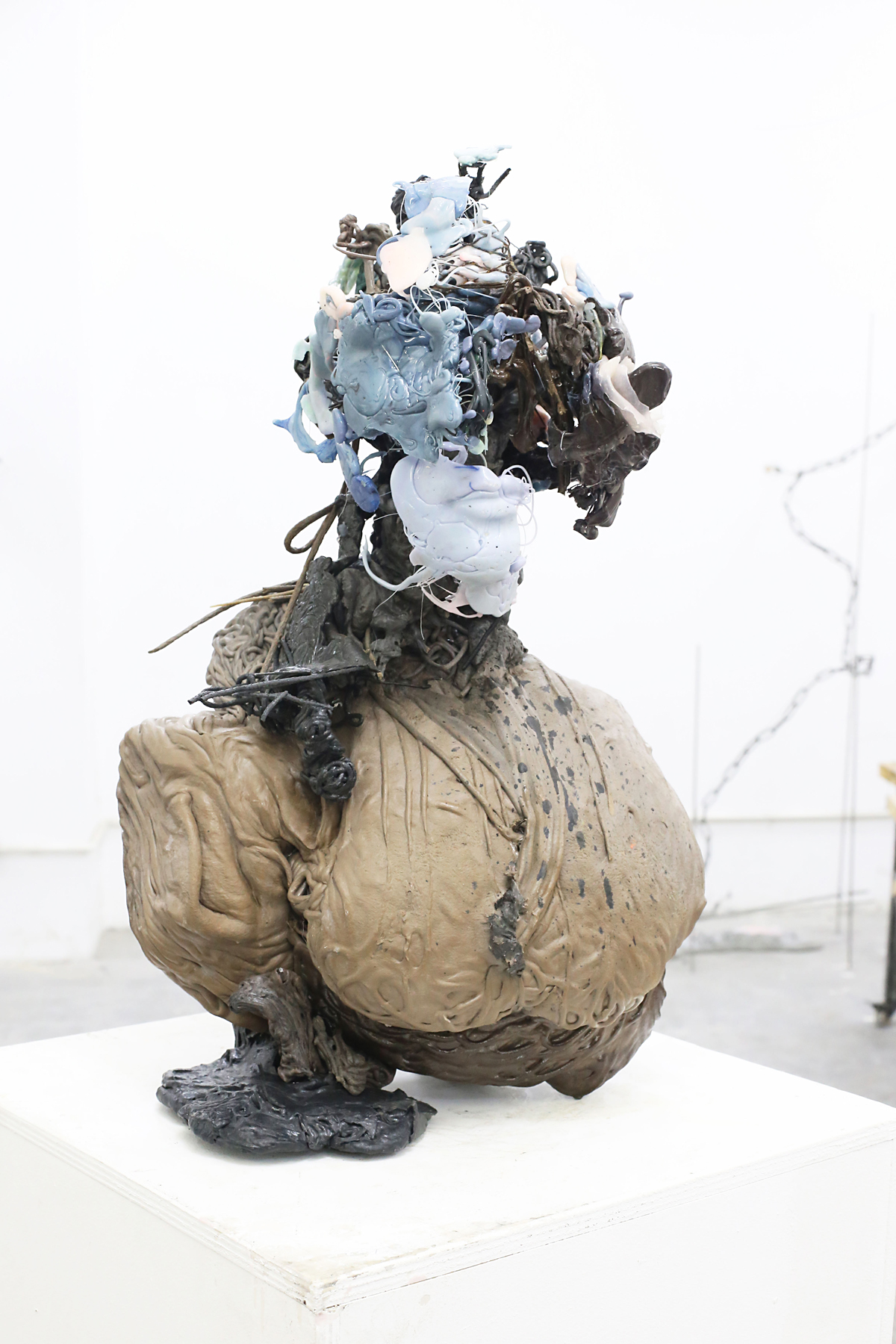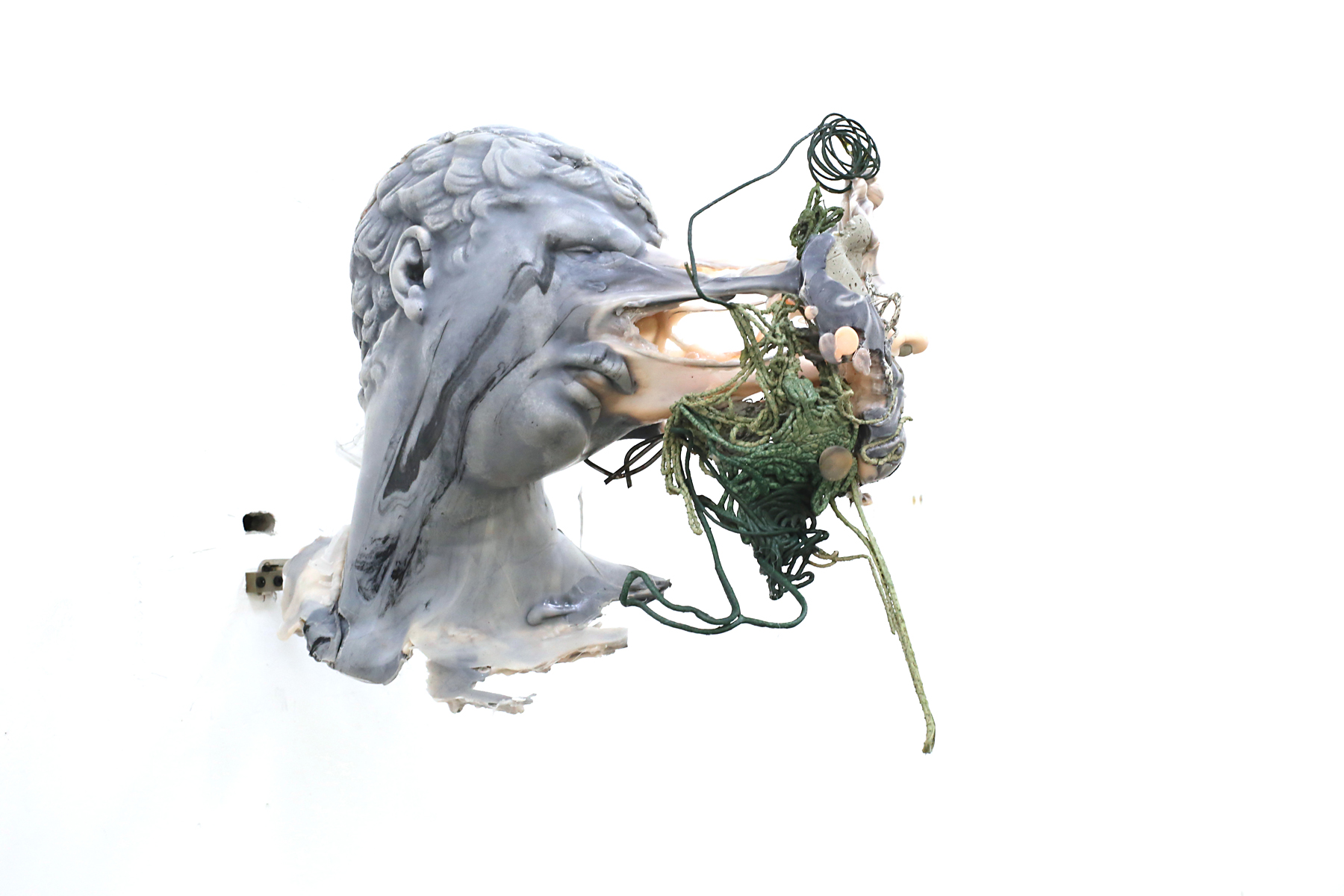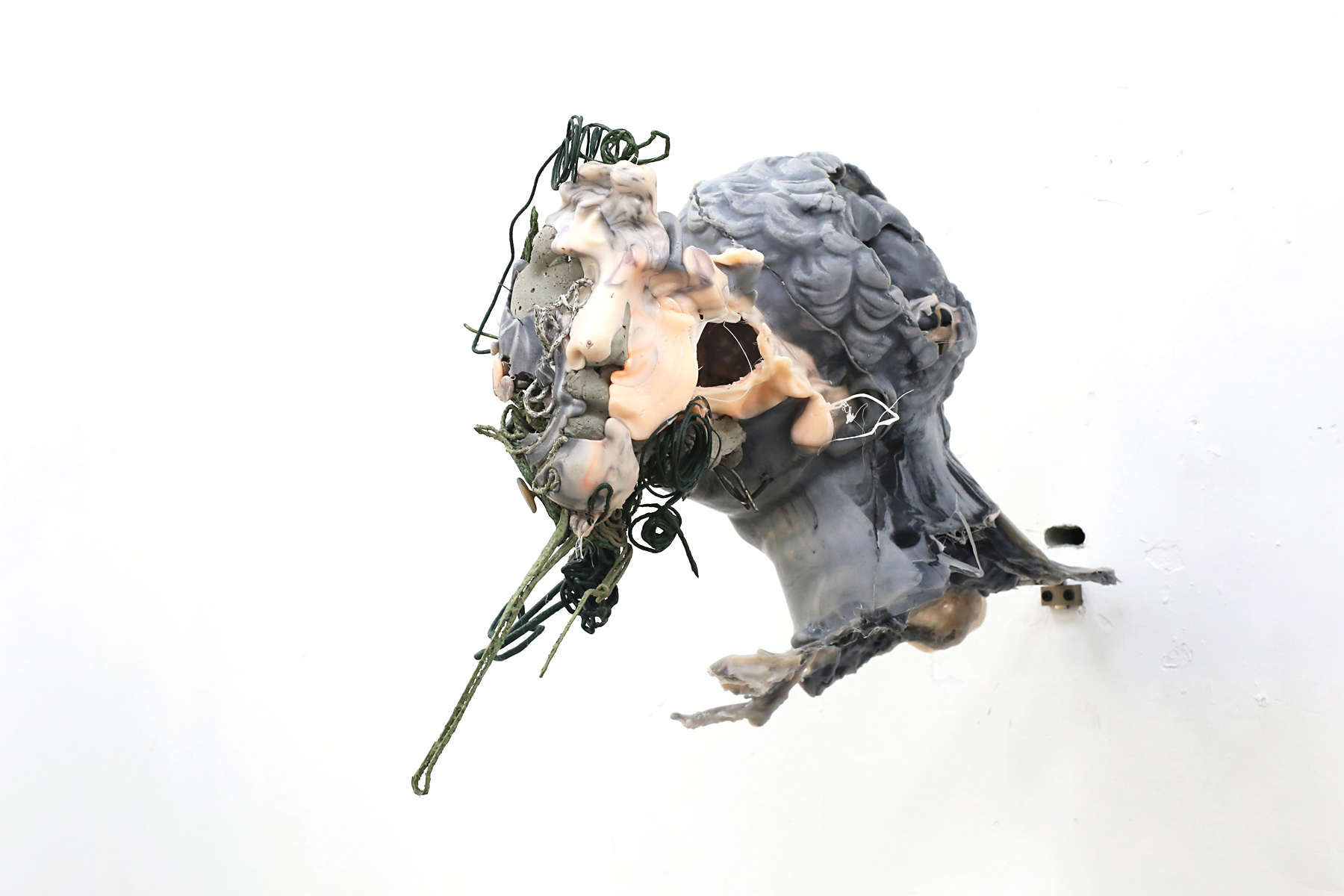Jin Shan 靳山
born 1977
Huai’an, Jiangsu province China; lives and works in Shanghai, China
Mistaken (误解 wujie), 2020
wood, plastic, 90 x 100 x 194 cm
Courtesy of Jin Shan and BANK/MABSOCIETY
Jin Shan 靳山
born 1977
Huai’an, Jiangsu province China; lives and works in Shanghai, China
Medusa (美杜莎 Meidusha), 2020
elastic, wire, plaster, 103 x 93 x 40cm
Courtesy of Jin Shan and BANK/MABSOCIETY
Jin Shan 靳山
born 1977
Huai’an, Jiangsu province China; lives and works in Shanghai, China
Errata (勘误 kanwu), 2020
plastic, iron wire, polyphenylene sulfide, 55 x 31 x 31.5 cm
Courtesy of Jin Shan and BANK/MABSOCIETY
Jin Shan 靳山
born 1977
Huai’an, Jiangsu province China; lives and works in Shanghai, China
Gordion’s Knot (高迪的结 Gao di de jie), 2020
plastic, iron wire, polyphenylene sulfide, 41 x 25.5 x 58 cm
Courtesy of Jin Shan and BANK/MABSOCIETY
Jin Shan’s Gordion’s Knot is an interpretation of the legendary tale of Phrygian Gordium associated with Alexander the Great. It is often used as a metaphor for an intractable problem (untying an impossibly tangled knot) solved easily by finding an approach to the problem that renders the perceived constraints of the problem moot (cutting the Gordian knot).
Jin’s work renews this tale for the present where we are seemingly living in mythical times. The search for an easy way out or a magical solution for global woes is both wishful and beyond the realm of our capacities. The knot becomes ourselves, the constant protagonist whose complexity can never be severed.
The legend tells that the Phrygians were without a king, but an oracle at Telmissus (the ancient capital of Lycia) decreed that the next man to enter the city driving an ox-cart should become their king. A peasant farmer named Gordias drove into town on an ox-cart and was immediately declared king. Out of gratitude, his son Midas dedicated the ox-cart to the Phrygian god Sabazios (whom the Greeks identified with Zeus) and tied it to a post with an intricate knot of cornel bark (Cornus mas). The knot was later described by Roman historian Quintus Curtius Rufus as comprising “several knots all so tightly entangled that it was impossible to see how they were fastened”.
The ox-cart still stood in the palace of the former kings of Phrygia at Gordium in the fourth century BC when Alexander arrived, at which point Phrygia had been reduced to a satrapy, or province, of the Persian Empire. An oracle had declared that any man who could unravel its elaborate knots was destined to become ruler of all of Asia. Alexander wanted to untie the knot but struggled to do so without success. He then reasoned that it would make no difference how the knot was loosed, so he drew his sword and sliced it in half with a single stroke. Alexander later went on to conquer Asia as far as the Indus and the Oxus, thus fulfilling the prophecy.
靳山 《戈尔迪翁之结》
靳山的“戈尔迪翁之结”是对与亚历山大大帝有关的弗里吉安·戈尔迪姆传奇故事的诠释。它经常被用来比喻一个棘手的问题 (解开一个不可能纠结的结),通过找到一种解决问题 的方法,使问题的可感知的约束变得没有意义(“割断棘手的结”),很容易就能解决。
靳的作品将这个故事带入了我们似乎生活在神话时代的当代。为全球灾难寻找一条简单的出路或神奇的解决方案既是一厢情愿的,也超出了我们的能力范围。这个结变成了我们 自己,永远不变的主人公,它的复杂性永远无法割断。
传说弗里吉亚人没有国王,但特尔米塞斯(吕西亚的古都)的一位先知颁布命令,下一个开着牛车进城的人应该成为他们的国王。一位名叫戈迪亚斯的农民骑着牛车进城,并立即被 宣布为国王。出于感激,他的儿子迈达斯将牛车献给弗里吉亚神萨巴齐奥斯(希腊人认为他是宙斯),并用错综复杂的山茱萸树皮结(山茱萸)将牛车绑在柱子上。罗马历史学家昆图 斯·柯蒂乌斯·鲁弗斯 (Quintus Curtius Rufus) 后来将这个结描述为“几个结都紧紧缠绕在一起,以至于不可能看到它们是如何绑在一起的”。
公元前4世纪,当亚历山大到达戈尔迪姆时,牛车仍然矗立在前弗里贾国王的宫殿里,那时弗里贾已经沦为波斯帝国的一个国王或省份。一位先知宣称,任何人只要能解开它精心 设计的结,就注定要成为整个亚洲的统治者。亚历山大想解开这个结,但没有成功。然后他推论说,这个结怎么松都没有关系,于是他拔出剑,一挥就把它劈成两半。亚历山大 后来征服了亚洲,远至印度河和奥克斯河,从而实现了这个预言。
Artist bio
Jin Shan 靳山 currently works and lives in Shanghai, China. In 2011, as part of a three-week residency at the Spencer Museum sponsored by the Freeman Foundation, Jin created the installation It Came from the Sky, which included a large-scale policeman suspended from the ceiling in the Central Court that would unexpectedly crash to the floor. His 2010 sculpture Retired Pillar, which appears to breathe, was exhibited in the Museum’s exhibition Temporal Turn: Art & Speculation in Contemporary Asia. Since 2013, Jin Shan has been exploring the malleable qualities of plastic to exploit what he describes as “a nasty feeling.” Some of these new plastic sculptures are in the exhibition The Allure of Matter: Material Art from China, which was interrupted by the coronavirus pandemic while on display in Chicago. In recent personal news, on June 14, 2020, Jin Shan and his wife Maya Krammer welcomed Mika Jin Krammer into the world.

